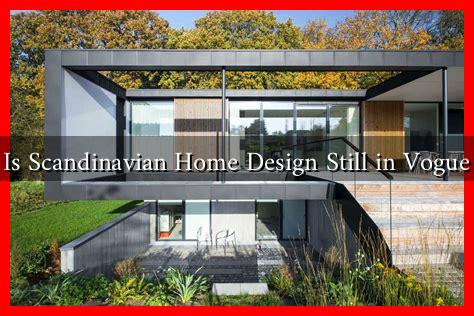-
Table of Contents
Is Scandinavian Home Design Still in Vogue?
Scandinavian home design, characterized by its minimalism, functionality, and connection to nature, has been a dominant trend in interior design for several years. But as we move further into the 2020s, one might wonder: is this aesthetic still in vogue? This article explores the enduring appeal of Scandinavian design, its evolution, and how it continues to influence modern interiors.
The Essence of Scandinavian Design
Scandinavian design emerged in the early 20th century, gaining global recognition in the 1950s. It emphasizes simplicity, clean lines, and a neutral color palette, often incorporating natural materials like wood and leather. Key principles include:
- Functionality: Every piece of furniture serves a purpose, ensuring that spaces are not only beautiful but also practical.
- Minimalism: Clutter is avoided, with a focus on essential items that bring joy and utility.
- Connection to Nature: Large windows, natural light, and organic materials create a harmonious relationship between indoor and outdoor spaces.
Current Trends in Scandinavian Design
While the core principles of Scandinavian design remain intact, the style has evolved to adapt to contemporary tastes. Here are some current trends that showcase its ongoing relevance:
- Warmth and Texture: Modern Scandinavian interiors are incorporating warmer tones and varied textures, moving away from the starkness of earlier designs. Soft textiles, layered rugs, and earthy colors are becoming more prevalent.
- Sustainable Materials: With a growing emphasis on sustainability, designers are increasingly using eco-friendly materials. Brands like Fjords are leading the way in creating sustainable furniture that aligns with Scandinavian principles.
- Biophilic Design: Integrating plants and natural elements into home decor is a trend that resonates with the Scandinavian ethos of connecting with nature.
Case Studies: Scandinavian Design in Action
Several notable projects exemplify the continued popularity of Scandinavian design. For instance, the Nordic Design exhibition in Toronto showcased a range of contemporary Scandinavian furniture and decor, attracting thousands of visitors and highlighting the style’s adaptability.
Another example is the rise of Scandinavian-inspired co-working spaces, such as WeWork, which incorporate open layouts, natural light, and communal areas that foster collaboration. These spaces reflect the principles of Scandinavian design while catering to modern work culture.
Statistics and Market Insights
The global market for Scandinavian furniture is projected to grow significantly. According to a report by Statista, the furniture market in Europe is expected to reach €100 billion by 2025, with Scandinavian design playing a crucial role in this growth. The increasing demand for minimalist and functional furniture is driving brands to innovate while staying true to their roots.
Conclusion: The Timelessness of Scandinavian Design
In conclusion, Scandinavian home design is not only still in vogue but is also evolving to meet the needs of contemporary living. Its principles of functionality, minimalism, and a connection to nature resonate with modern consumers who seek both beauty and practicality in their homes. As sustainability becomes a priority, Scandinavian design’s emphasis on eco-friendly materials and practices will likely keep it at the forefront of interior design trends.
Whether through warm textures, biophilic elements, or innovative furniture solutions, Scandinavian design continues to inspire and adapt, proving that its timeless appeal is far from fading. As we embrace the future, it is clear that the essence of Scandinavian design will remain a significant influence in the world of home decor.


